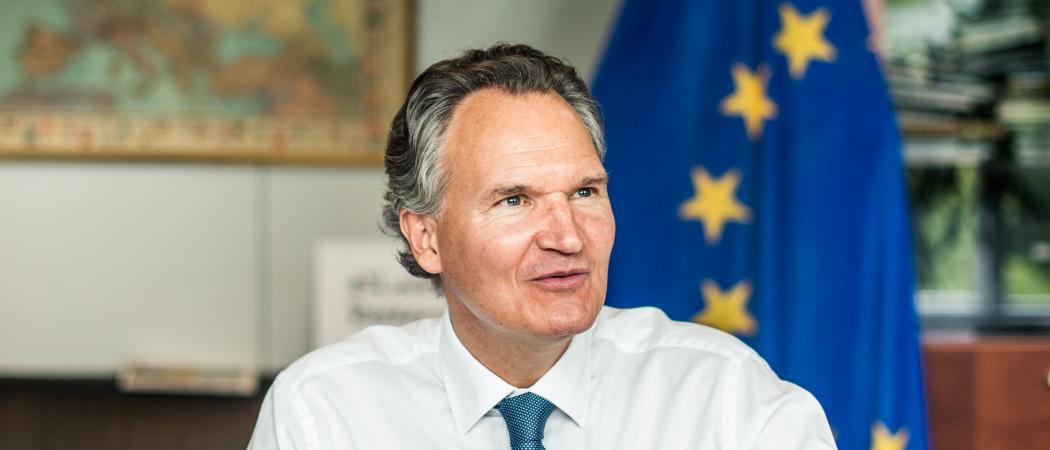The architect of ‘Plan-S’, Robert-Jan Smits, hopes to force a major change in the business model of academic publishers. The effect will be similar to the abolition of mobile phone roaming charges in Europe, he says

The architect of ‘Plan-S’, Robert-Jan Smits
The European Commission and a group of national research funders have laid out a controversial and perhaps precedent-setting plan to make thousands of research papers free to read on the day of publication, in a move that could force a major change in the business model of science publishers.
The initiative, 'Plan-S', brings together eleven top national research funders, plus the European Research Council, in an effort to release some of the world’s highest quality and highest impact research from behind journal paywalls.
Under the initiative, funding agencies including UK Research and Innovation, Science Foundation Ireland and the Research Council of Norway will require grant holders to publish only in journals that offer immediate open access, and under a licence that enables anyone to freely reuse and distribute the material.
The European Commission and coalition of national research funders in Austria, France, Ireland, Italy, Luxembourg, the Netherlands, Norway, Poland, Slovenia, Sweden and the UK will implement the new policy from 1 January 2020.
The idea is to open up publicly funded research to everyone, not just the well-resourced, says the architect of the plan, Robert-Jan Smits. “The solution for opening up research is in the hands of funders. They hold the key,” he told Science|Business. The EU's research commissioner, Carlos Moedas, congratulated the funding bodies that committed to Plan-S "and strongly encourage[d] others to follow as soon as possible".
Smits hopes the plan will increase the pressure on a handful of influential science gatekeepers, such as Elsevier, Wiley and Springer, which stand accused of limiting the flow of scientific information through the high subscription rates of their journals. Following almost eight years as EU’s most senior civil servant in research, Smits was appointed special envoy on open science within the European Political Strategy Centre, the Commission’s in-house think tank, in February. He developed the open access plan with Marc Schiltz, president of Science Europe, a body representing national public research funders.
A radical push
Europe needs a “radical push” on open access, Smits said. “We are today at 20 per cent immediate and full open access in Europe. Fifteen years ago, we were at 15 per cent open access. You can imagine that with this pace we will never reach the target set by the 28 EU science ministers that all publicly funded research be open, free, to readers by 2020.”
Under Plan-S, funders will pay an upfront fee to journals to cover editing costs, the so-called article-processing charges, to ensure the work is available free to access for anyone in perpetuity. The journal should be entirely open access, rather than a hybrid that offers an open access option. Authors, not publishers, will maintain copyright on their work.
One of the main inspirations for the plan is the Bill & Melinda Gates Foundation, the global health charity, which since 2017 has required that papers generated with its funding are made free to read immediately on publication, rather than permitting the six or 12-month delay some subscription journals require. Journals such as the New England Journal of Medicine and the Proceedings of the National Academy of Sciences changed their policies last year to offer a permanent open access publishing route for Gates grant holders.
Similarly, the UK’s Wellcome Trust, one of the world’s biggest medical research charities and another open access leader, has implemented Coalition-S principles. Wellcome grant recipients are required to make their results available for free, through the UK PubMed Central repository, within six months of initial publication, with Wellcome providing funding to its researchers to pay for publication costs.
Plan-S will maintain the same quality controls used for established journals, said Smits. Grant holders will still get to publish in major journals, while being steered away from so-called ‘predatory’ journals, which seemingly publish anything, with little to no peer review.
“We will use robust criteria for where scientists can publish, based on the excellent work done by the Directory of Open Access Journals,” Smits said. A few highly cited journals such as Nature and Science will be off-limits for grant holders subject to Coalition-S, unless these publishers change their policies and offer open access.
There will also be sanctions to encourage holders of grants to comply with the plan, including the possible withholding of future funding.
Destroying ‘the cobweb’
Smits compares his plan, which follows months of meetings with funders and publishers, to the abolition of mobile phone roaming charges in Europe.
“It’s similarly about breaking the power of very exclusive oligopolies,” he said. “A better system is possible, and the shift is unstoppable.” Plan-S could also serve as a big laboratory for large open access deals, after recent efforts in countries such as Germany and Sweden stumbled.
“It has been a kind of Robin Hood story. We want to take money from publishers’ shareholders and give it back to the labs,” Smits said.
The Dutchman says science is getting a bad deal under the current system. The world’s academic institutions pay almost €8 billion every year for subscriptions to publishers’ products, and in recent years, the rising cost has severely strained library budgets around Europe.
The most recent flashpoint in the open access dispute is in Germany, where more than 150 libraries, universities, and research institutes have banded together to pressure publishers to change their business models. Some researchers now refuse to conduct peer review for or submit papers to commercial journals.
The business of big journals is about as lucrative as it gets. The market is worth €10 billion a year globally, with operating margins for publishers of about 30 per cent. A 2005 Deutsche Bank report referred to academic publishing as a “bizarre triple-pay” system, in which “the state funds most research, pays the salaries of most of those checking the quality of research, and then buys most of the published product” for thousands of euros per year.
“Publishers are in a league of their own, with no incentive to change the system. They will milk the cow for as long as possible,” Smits said.
But they are not solely to blame for the status quo. “There’s a cultural resistance. We’re all caught in this cobweb, and there’s a lot of hypocrisy around. Universities, for instance, are obsessed, solely, by the Journal Impact Factor metric for rewarding and recruiting research staff,” Smits said, referring to the frequency with which journal articles are cited in so-called high impact journals.
"It should not be important where you publish, but what you publish. Furthermore, researchers need to be evaluated on the basis of other metrics such as the quality of their teaching, the work they do for the local economy, the knowledge they transfer to industry, and their science communication activities,” he said.
Smits says publishers are “not the enemy”. “They simply have their own agenda, and so do I. They tell me that ‘we can only flip to open access if the US and China are on board too’. But it’s a bit like tackling climate change – someone needs to take the lead.”





 A unique international forum for public research organisations and companies to connect their external engagement with strategic interests around their R&D system.
A unique international forum for public research organisations and companies to connect their external engagement with strategic interests around their R&D system.